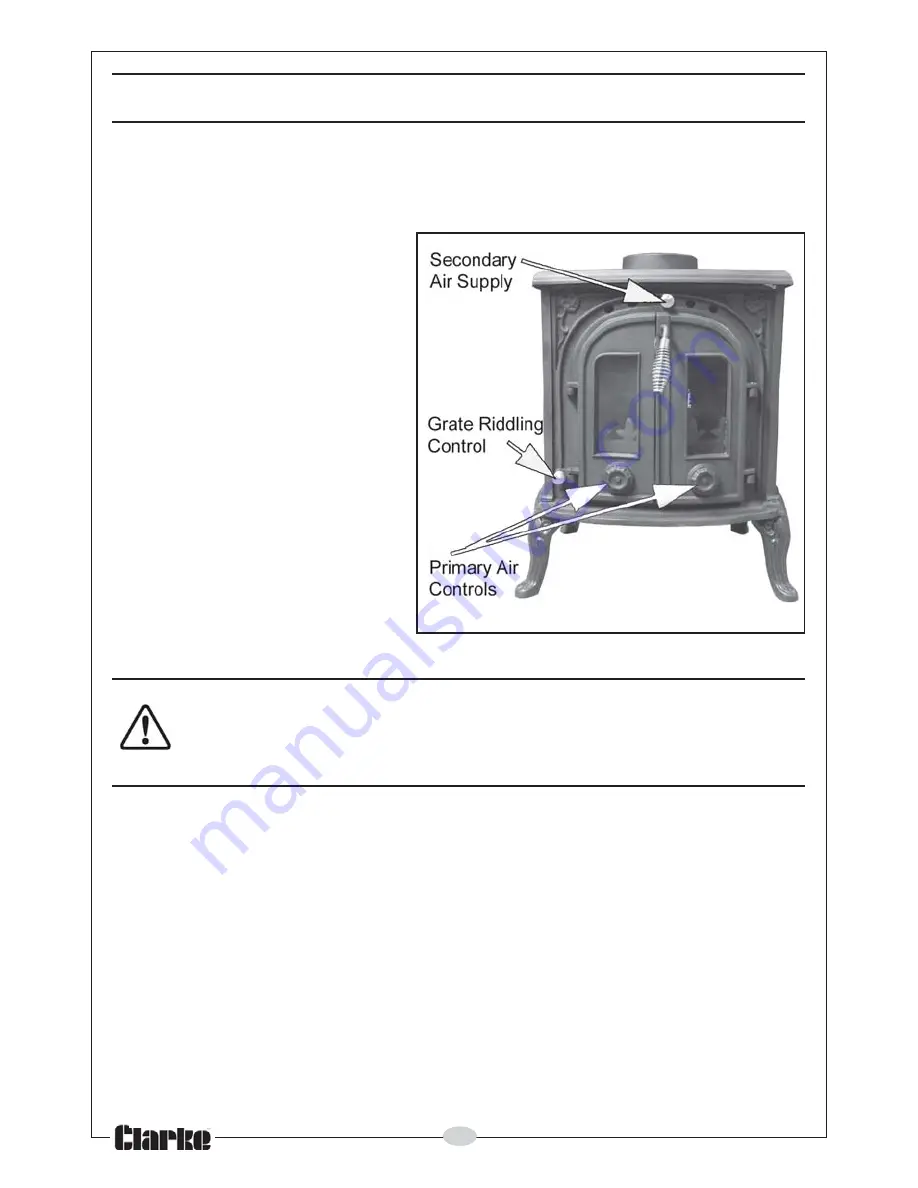
16
USING YOUR STOVE
THE CONTROLS
The amount of heat emitted by the stove is regulated using the following air
controls:
A) The primary air supply is
controlled using the two
lower air controls built into
each door.
B) A second air inlet provides
a constant, pre-heated air
supply to the combustion
just above the fire. This is
controlled using the upper
air control mounted near
the top of the stove. This air
supply will not normally
need to be regulated so will
usually be kept open.
C) The knob on the left is for
riddling (moving) the grate
panel to dislodge any
accumulation of loose ash
into the ash pan.
WARNING: THE TEMPERATURE REACHED BY THESE ITEMS DURING
OPERATION MAY CAUSE AN INJURY TO AN END-USER. AS THESE ARE
INTENDED TO BE ADJUSTED DURING OPERATION, IT IS RECOMMENDED
THAT PROTECTIVE GLOVES ARE WORN WHEN HANDING THESE PARTS.
TYPES OF FUEL
This stove will function with wood or coal, but in general all fuel should be dry
and timber should be well seasoned so as to have a moisture content below
20%. The use of damp wood will result in more soot and tar deposits being left
in the chimney, flu and stove, and will not release heat if thermal energy is
being used to drive out moisture from the fuel.
Other fuels can be used together with wood, provided the base of the fire
remains as wood or compressed block fuels. Coal products can be added to
this provided the volume of coal products is less than that of other fuels.
With solid fuels, there is less need to burn the stove hard after refuelling. The
rate of refuelling will also be less often than with wood.
Avoid using the stove to incinerate other materials including household
Fig 12



























